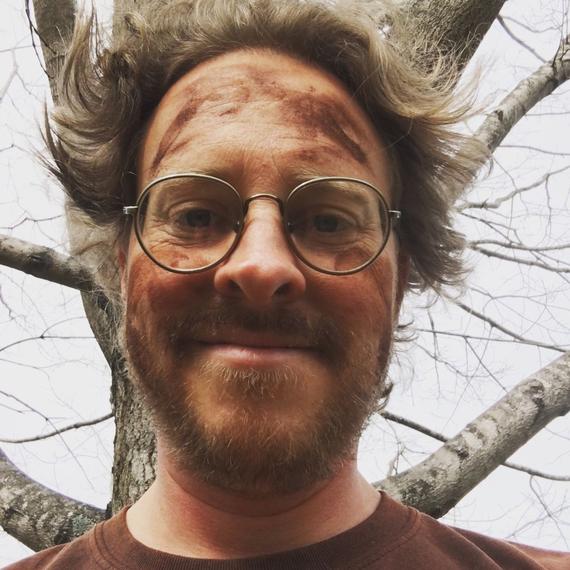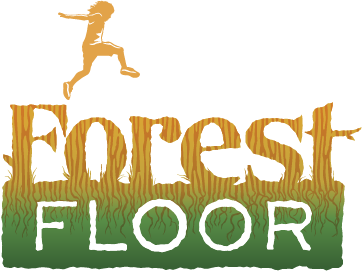I love taking groups of kids into the woods. At this point in my career as a nature-connection mentor I’ve done it literally hundreds of times. By now it feels so natural to me that I regularly lose track of time, amazed when I eventually look at the watch tucked into my backpack and realize how effectively we’ve filled our hours with seamless moments of nature-connection. Sometimes I’m genuinely incredulous, wondering how we did it. Compared to the busy & scheduled life I’m so accustomed to in the “Real World”, it feels like the time just flew by. But when I then reflect on what actually happened, I remember that connection takes time and presence, and the Forest Floor staff and I have gotten really good at slowing down and fully allowing the moment it’s place in our experience. This “allowing of the moment” isn’t something we can easily point to, and I might best describe it by sharing a bit about a recent day I had in the forest with a group of kids.
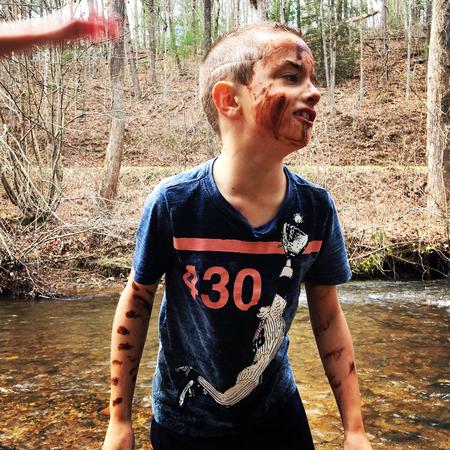
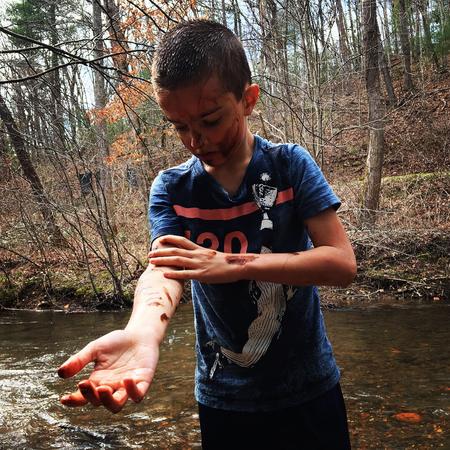
The structure, the bones, of any given day of our programs is often the same. We’ll begin the day with some active running games. This serves the goal of giving the kids an outlet for any pent-up energy they may bring with them, as well as provide a fun and structured activity to help them build greater rapport with each other. Today we played a variation of dodgeball called Krack-a-boom.
Often we followup our running games by sitting down in a circle and sharing gratitude. This is a quick and simple practice that can have a profound effect on the group. There is something about taking the time to share with others what you are feeling grateful for that has a way of grounding and centering a person. Allowing just a few moments to say “I’m grateful for my friends” or “I’m grateful for the sunshine today” has the ability to lift up everything that comes after it. We sink into the moment and take stock of the good things in our life, and this often brings us closer together.
After gratitude is snack and story time. Storytelling is an essential aspect of what we do, and often precedes any given lesson or activity. Sometimes the story is an epic fable telling of semi-magical events from long ago. Other times the story is a short personal recounting of a time the instructor had an experience that relates to the day’s activity. Regardless of the type of story, the intent is always the same: Give context for the lessons of the day and inspire the kids to fully engage with whatever activity we’re about to do.
On this afternoon the story was about the origins of fire. One of the remarkable things about this story is the fact that many cultures around the globe have a version of this story, some with only minor variations between them(e.g. Prometheus of Greek myth). In this particular version, the animals of the forest are suffering through a particularly long and cold winter, and need something to help them survive. So Rainbow Bird devises a plan to steal a coal from the fire of an unfriendly monster called a Skookum. A harrowing chase ensues, requiring the coordinated efforts of many different animals, with each of them sacrificing something in the process. Rainbow Bird arguably gets the worst of it. Holding the burning hot coal in her beak as she evades the angry Skookum, her beautiful rainbow feathers are charred black and her throat is seared, changing her beautiful voice to a rasping “CAW”(and thus she becomes Crow). But despite these challenges the animals succeed, learn to utilize this amazing new tool, and live more prosperously into the future.
One of the things I really enjoy about this particular story is that I’m able to tell it while simultaneously demonstrating how to properly build a fire structure, and further how to light it using a friction-fire bow-drill kit. Calling fire into being the “old way”, literally rubbing two sticks together and producing a glowing coal through concentrated friction, seems to touch something deeply human inside the people who participate. Upon witnessing this minor miracle, the light in their eyes and spring in their step tells me that a fire was also rekindled somewhere inside them.
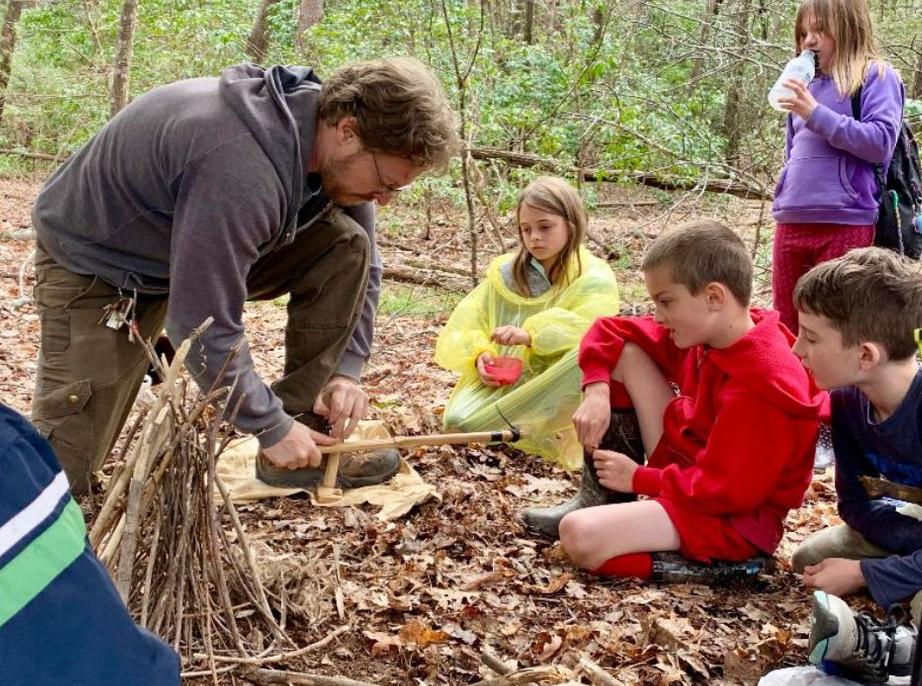
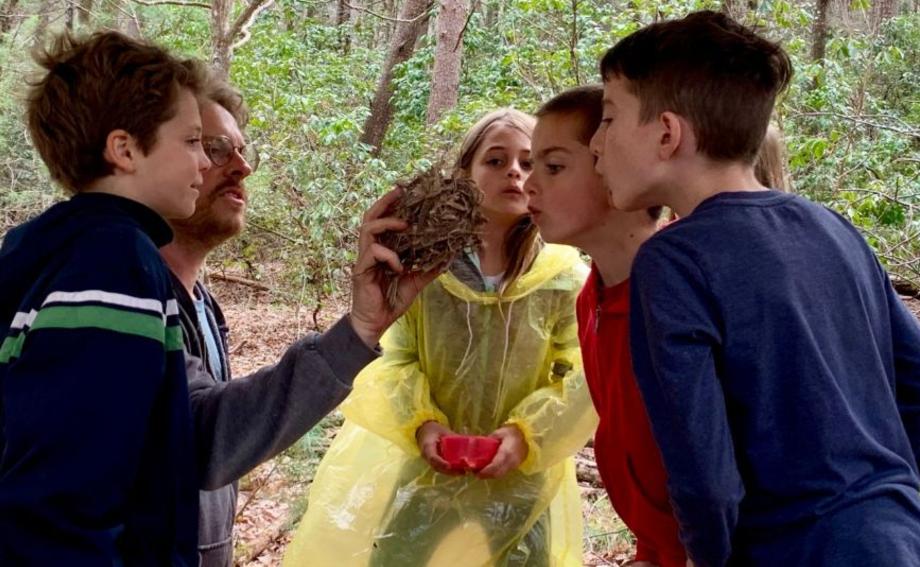
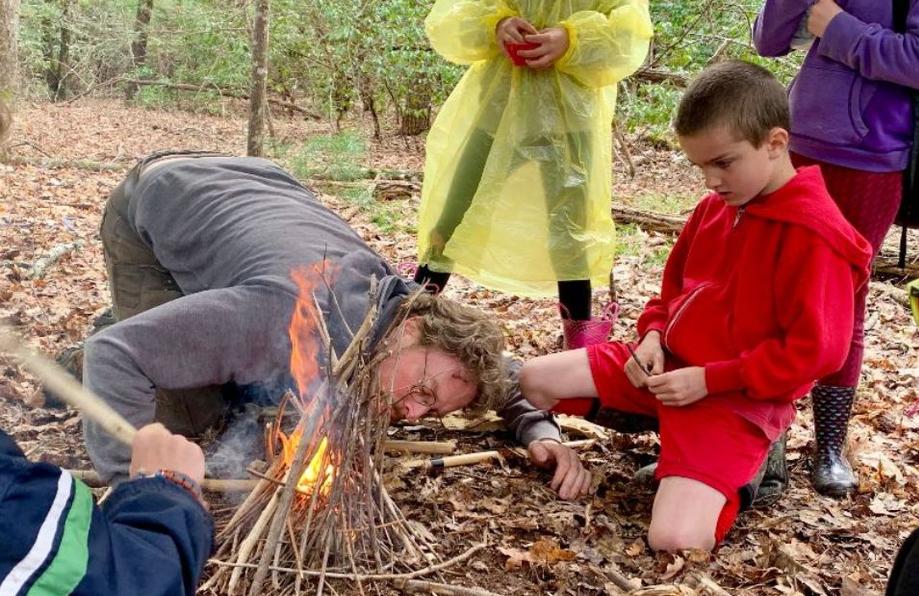
This is then the perfect segue into our next activity, the One-Match Fire Challenge. If the story landed well, I usually don’t even have to say anything about what I have planned next. The kids will automatically ask “Can WE make a fire?”.
Sure, I suppose so 😉
I then use the story as a reference to educate them on some of the finer points of building a proper fire structure and successfully lighting it with a single match. “What was the first thing that Rainbow Bird placed on her fire structure?” I’ll ask. Having just been immersed in the story, they all immediately recall “Mouse-tail sized sticks!”, and so it goes.
They have only 10 minutes, working in groups of three kids, to collect and arrange a bundle of sticks that can be lit with a single match. A controlled chaos ensues, as children rush around the forest trying to find dry sticks and work together to build their fire. We then take turns gathering around each group’s collection of twigs and small branches as they attempt to light it with a single match. In this way we maximize the learning opportunity, with every kid seeing what works and what doesn’t by observing each others successes and failures.
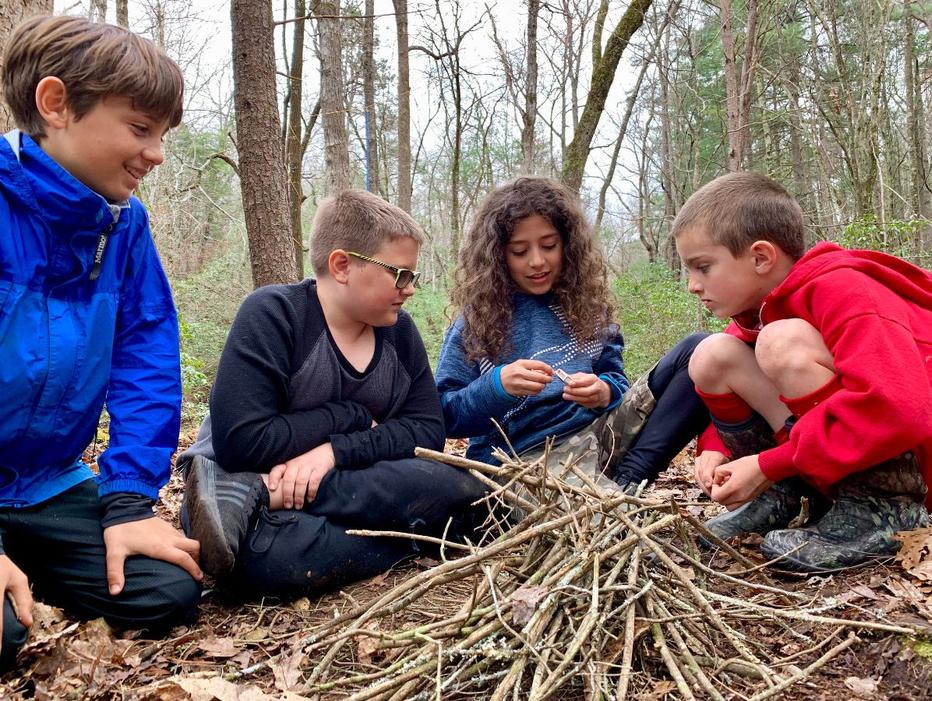

All told, including the time spent walking through the woods from the parking lot to our basecamp in the forest, what I’ve just described is a 4 hour experience. You might think that this is quite a bit of time and build-up for a single lesson on fire-making, with the actual activity of the kids trying to build a fire lasting maybe 30 minutes total, including the drama of lighting it and harvesting the learning. And yes, relative to many other models of education, it is a lot time. But what we’ve found is that if the goal is not only education but rather true connection, the context of learning is at least as important, if not more so, than the lesson itself. When we take the time and energy to address the whole student, and do so in a rhythm that matches that of the natural world, the result is a level of engagement with the lesson that almost guarantees that not only will they learn the mechanics and physics of how to build a fire, but they will come to love the fire as well.
Every aspect of the program is part of building this sort of container that holds the kids. The running, the sharing of gratitude, the slow wander down to the creek peppered with games of hide and seek, all these things serve to help them fully arrive in the moment. Within this container they feel safe to truly express who they are and in turn connect more deeply with what they encounter, whether that be a plant, a fire, or their human friend.
So, when they meet the Spicebush shrub, tasting its edible yellow-tufted flowers and smelling its lively fragrant oils, they not only learn about a new plant who’s dead twigs are especially helpful in making a fire, they also make a new friend. In this way, slowly, one fun and heartfelt encounter after another, and just as they do with any important relationship in their life, they build a genuine connection with the natural world. And as is true for any deep relationship, it’s something they’ll carry with them and draw upon for the rest of their lives.
- Clint Corley, Founder & Executive Director
